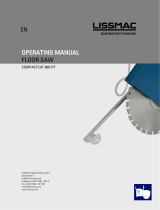
3 Safety
16
Safety precautions when refueling
Please observe the following safety-relevant instructions when refueling:
Do not refuel near open flames.
Do not smoke.
Turn off the engine before refueling and allow it to cool down.
Refuel in a well-ventilated environment.
Wear fuel-proof protective gloves and, if there is the possibility of spraying,
protective goggles and clothing.
Do not inhale fuel vapors.
Avoid skin and eye contact with fuel.
For refueling, use clean tools such as a hopper.
Do not spill fuel, especially onto hot parts.
Remove any spilt fuel immediately.
Use the correct fuel grade.
Do not mix fuel with other liquids.
Fill the tank only up to the maximum marking. If there is no maximum mar-
king, do not fill up the tank completely.
Lock the fuel cap securely after refueling.
Operation in closed rooms
In closed or partially closed rooms such as tunnels, drifts or deep trenches, ensu-
re sufficient ventilation and extraction by, for example, providing a powerful ex-
haust air fan.
Danger of poisoning! Do not inhale exhaust fumes. They contain toxic carbon
monoxide that can lead to unconsciousness or death.
Caution with hot parts
Do not touch any hot parts such as the engine block or exhaust muffler during
operation or directly afterwards. These parts can become very hot and cause se-
vere burns.
Shutting off the fuel tap
When the machine stops, shut off the fuel tap.
Cleaning the engine
Clean the engine when it is cool to remove any dirt.
Do not use gasoline or solvents. Danger of explosion!
Health hazard due to exhaust fumes
Warning
The engine's exhaust fumes contain chemicals which are known to the State of
California to cause cancer, congenital defects or other reproductive anomalies.





















